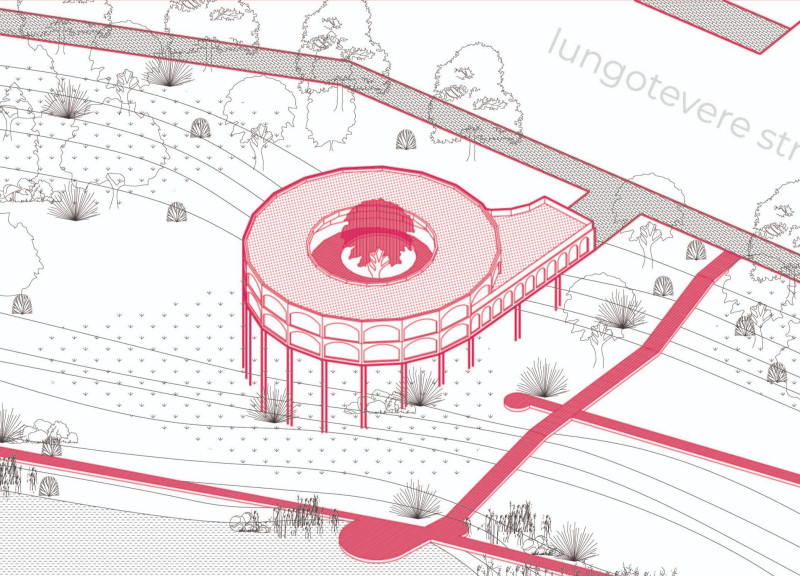5 key facts about this project
Located along the Tiber River in Rome, the design centers on connecting urban life with the natural surroundings. The goal is to address the risks associated with flooding while promoting community interactions through a closer relationship with the river. Water-sensitive design principles guide the project to turn the urban edge into an active area that invites both residents and nature to engage.
Design Concept
The design is built around the idea of resilience, recognizing the historical importance of the Tiber as both a valuable resource and a possible threat. Instead of separating the city from the river, the approach seeks to create a relationship that encourages people to interact with the water. This redefinition of urban edges facilitates a smoother transition between the built environment and the natural landscape.
Community Engagement
Enhancing community dynamics is a key part of the design. Shared spaces are incorporated to foster social interaction among residents, reflecting a commitment to building strong community ties. Each living unit includes essential amenities, such as small refrigerators and sinks, which support communal activities while still allowing personal privacy.
Adaptability and Resilience
In light of Rome's ongoing housing challenges, the design promotes a flexible spatial arrangement. The cluster-based layout enables a variety of living options that can adjust to the needs of the residents over time. To address the history of flooding in the area, elevated living spaces take cues from traditional fishing practices. This approach turns potential risks into integral design elements that enhance resilience.
Design Integration
While specific materials for construction are not detailed, the design focuses on blending with local conditions and the cultural context of Rome. Emphasizing adaptability, it aligns with the city’s historical fabric. Attention to detail highlights features that interact with the Tiber's natural flow, enriching the urban experience and encouraging residents to engage with their environment.
The architectural layout connects with the river, where the design responds to the water’s movement, inviting residents to explore and appreciate their surroundings, while recognizing the landscape’s inherent characteristics.



























